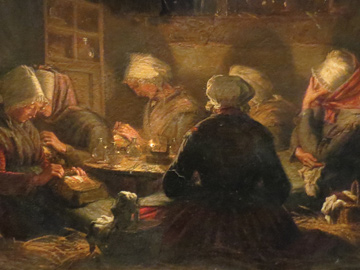Light Touch
Lacemaker’s Lamps
Stephen Wilk spins an illuminating tale about old-fashioned artificial light sources for lacemakers and other artisans.
 Artisans would hang the water bulb from the ceiling or place it on a stand between their work and their light source. [Priit Halberg / Musée des Manufactures de Dentelles, Retournac, France]
Artisans would hang the water bulb from the ceiling or place it on a stand between their work and their light source. [Priit Halberg / Musée des Manufactures de Dentelles, Retournac, France]
How did artisans illuminate their fine work before the invention of modern lighting? The obvious answer is that they used sunlight. In the Middle Ages, sciptoria, centers for illuminating and transcribing written works, had large windows that provided plenty of light to work by. But after sunset, scribes would need an artificial light source to continue working on their manuscripts. Premium bright and smokeless candles, like those made of beeswax and spermaceti, were expensive. Cheaper alternatives, like oil lamps, rush lights and tallow candles, produced inconsistent light and were not as bright.
…Log in or become a member to view the full text of this article.
This article may be available for purchase via the search at Optica Publishing Group.
Optica Members get the full text of Optics & Photonics News, plus a variety of other member benefits.
